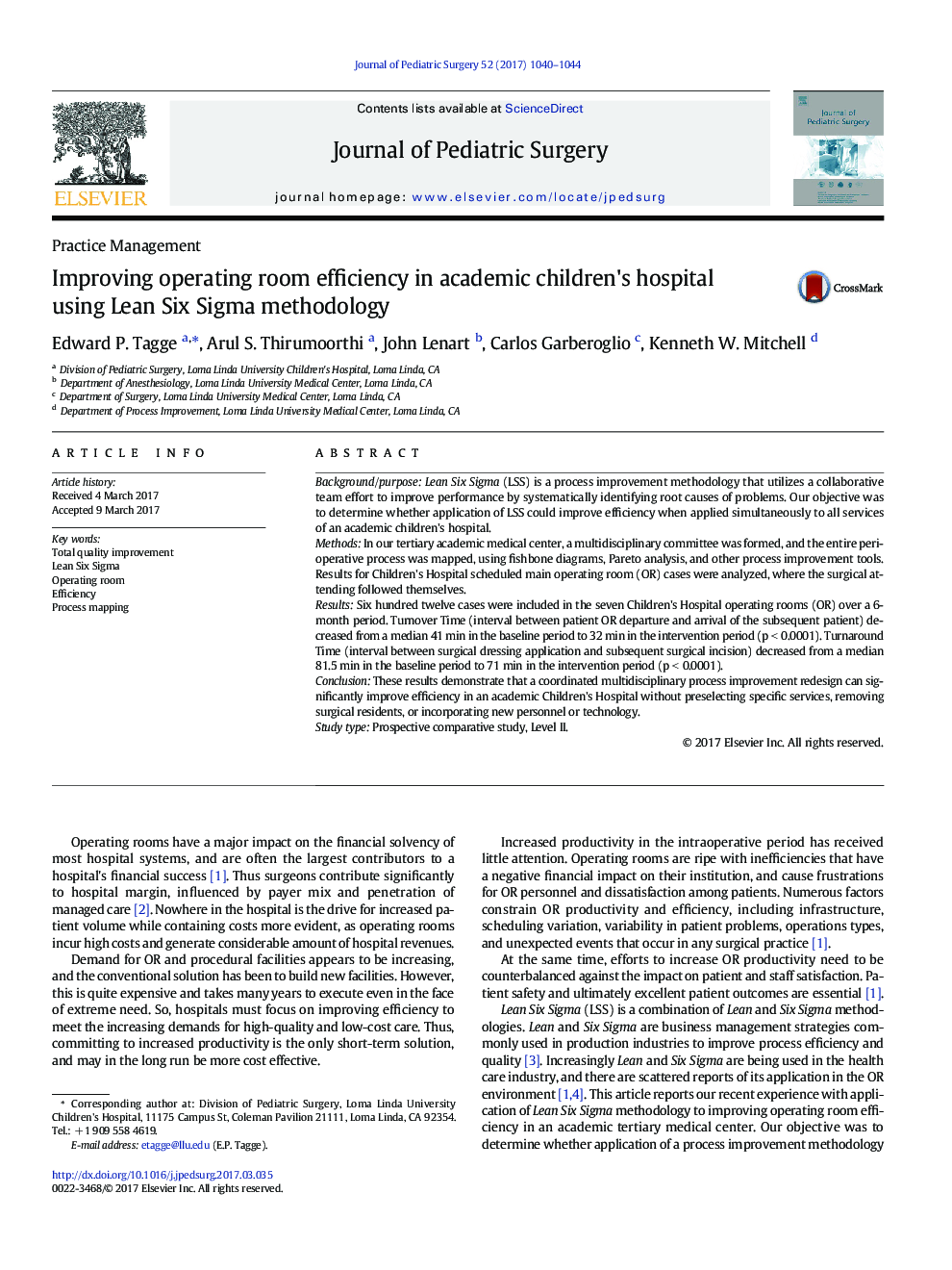| Article ID | Journal | Published Year | Pages | File Type |
|---|---|---|---|---|
| 5718516 | Journal of Pediatric Surgery | 2017 | 5 Pages |
Background/purposeLean Six Sigma (LSS) is a process improvement methodology that utilizes a collaborative team effort to improve performance by systematically identifying root causes of problems. Our objective was to determine whether application of LSS could improve efficiency when applied simultaneously to all services of an academic children's hospital.MethodsIn our tertiary academic medical center, a multidisciplinary committee was formed, and the entire perioperative process was mapped, using fishbone diagrams, Pareto analysis, and other process improvement tools. Results for Children's Hospital scheduled main operating room (OR) cases were analyzed, where the surgical attending followed themselves.ResultsSix hundred twelve cases were included in the seven Children's Hospital operating rooms (OR) over a 6-month period. Turnover Time (interval between patient OR departure and arrival of the subsequent patient) decreased from a median 41 min in the baseline period to 32 min in the intervention period (p < 0.0001). Turnaround Time (interval between surgical dressing application and subsequent surgical incision) decreased from a median 81.5 min in the baseline period to 71 min in the intervention period (p < 0.0001).ConclusionThese results demonstrate that a coordinated multidisciplinary process improvement redesign can significantly improve efficiency in an academic Children's Hospital without preselecting specific services, removing surgical residents, or incorporating new personnel or technology.Study typeProspective comparative study, Level II.
